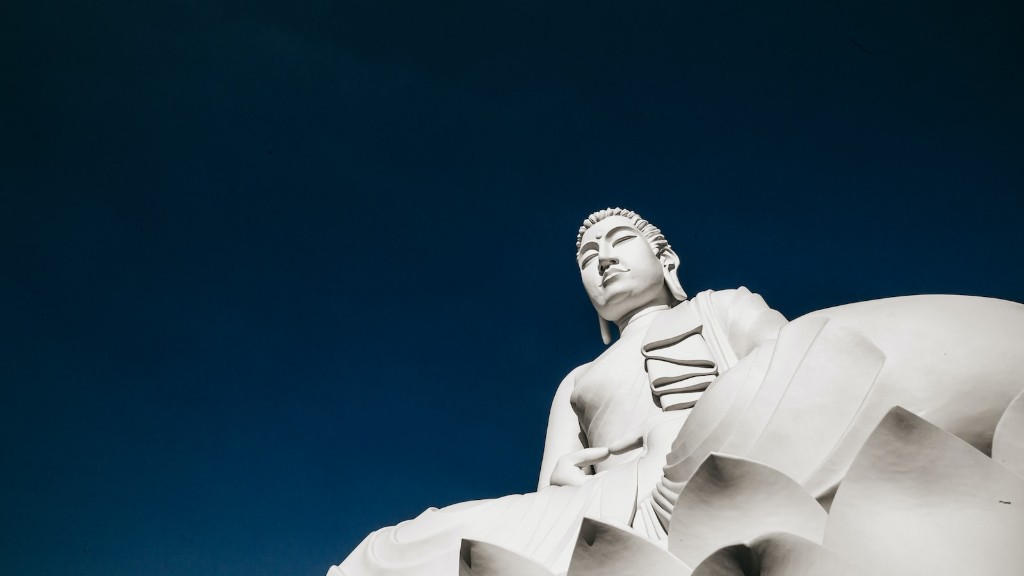Roots of Judaism
Judaism is one of the oldest religious traditions in the world, tracing its origins back to roughly 1500 BCE. At its core, Judaism is based on a covenant between the Israelites and their god, or the Elohim, depicted in the Pentateuch – the first five books of the Jewish Bible. According to Jewish tradition, the Elohim gave the Jewish people the Torah – a set of laws, moral guidelines and religious statements – as a form of contract. This covenant was seen as a conditional promise of spiritual life, so long as the agreement was kept.
Whether it is interpreted as a divine contract or ideological standard, the Torah has shaped the values and beliefs of the Jewish people. Currently, Orthodox Jews consider the Torah to be the absolute, literal word of the Elohim, while Reform or Conservative Jews may regard it more as a ritual code of conduct. Either way, this scripture is seen as the core of Jewish faith, as it has been for thousands of years.
For the Jewish people, the Torah is not just a set of books, but a way of life. It dictates how people should govern themselves and guide them in religious observance. It upholds traditional values and defines ethical correct behavior for the Jewish community and beyond. For example, the Torah is the source of the religious laws which detail the Shabbat and the dietary rules of kashrut.
Influence of the Torah
Since its establishment, the Torah has had a profoundly influential impact on Judaism as a religion and culture. It has provided the structure and language through which subsequent interpretations and reinterpretations of Jewish law and faith have been expressed. Moreover, its values remain the cornerstone of the Jewish identity: through its teachings the Jewish people have connected to their culture, their history and even to each other.
With every year and era, however, the interpretation, exploration and elaboration of the Torah has developed further. Although its words remain immune, the scope and tone of commentaries build an ever-changing, living document going far beyond a set of rules. As such, countless interpretations of the same scriptures are vital to the developing understanding of the Torah, leading to one of the most vibrant and diverse philosophical pursuits in history.
The interpretations of the Torah have profoundly shaped Jewish life, building the foundations of Jewish education, tradition and culture. For many generations, Jews have studied, debated and shared their views on the Torah not just within the Jewish community, but with other cultures too. As a result, the fundamental ideas and interpretations in the Torah form the bridge between Jews and the rest of the world, allowing religious and inter-cultural exchange.
Contemporary Interpretation
The interpretation and exploration of the Torah is an ongoing process that continues to the present day and beyond. This is particularly the case when it comes to social issues, as contemporary problems are often addressed in the light of ancient tribal laws written in a language that differs from the modern one. In an effort to bridge this divide, rabbis in traditional communities are trained to develop new perspectives on the Torah interpretations and create laws that address emerging issues such as technology and bioethics.
This contemporary interpretation of the Torah is highly significant, as it is the means through which modernity and tradition can co-exist in the same religious creed. By putting forward new and diverse interpretations, rabbis show that both understandings of the Torah –the literal and figurative ones- are valid and valuable. At the same time, these interpretations form a bridge between religion, doctrine and modernity, impacting all spheres of life.
The Written Torah
The written Torah, also known as the ‘Tanakh’, comprises 24 books divided into three sections: the Torah (the ‘Five Books of Moses’), the Nevi’im (the Prophets) and the Ketuvim (the Writings). The Torah is the foundation of the Tanakh, telling the story of creation, the identity of the Israelites and the commandments that the Elohim gave to the Jewish people. It is written in the Hebrew language and according to tradition, it was given to Moses on Mount Sinai during his encounter with Yahweh.
Since its written form, the Torah was considered a guarantee of faith and a source of purity. As such, it was passed down orally and eventually transcribed in final form by Ezra and the Men of the Great Assembly shortly around 500 BCE. This written Torah is considered to be the perfect, authoritative version, which cannot be changed or modified.
The oral law, based on this written version, is composed of the rabbinic commentary, commentary on commentary and the Talmud. This oral law is seen as supplementary to the written word of the Torah and is was designed to interpret its religious laws. Since its establishment, the oral law has provided the framework for both religious and civil law, allowing for a flexible interpretation of the written Torah.
Consequences of Ignoring Torah
For the Jewish people, ignoring the Torah would mean to reject their covenant. Judaism is based on a contract between God and the Jewish people, and the study and observance of the Torah became its source of spiritual authority and the basis of community values. Therefore to ignore the Torah would be to ignore the crucial bond between them and Yahweh, which would set them at a distance from both religious truth and divine grace.
Moreover, the oral law and its associated commentaries have become a crucial element in the Jewish tradition and culture, protecting it from the changing values of time and allowing for greater flexibility in religious law. Consequently, not only would the observance of these laws set believers apart from the divine, but they would also lead to an erosion of moral and religious culture.
The Significance of Mitzvot
Apart from being the source of the divine contract between God and the Jewish people, the Torah is also seen as the source of the mitzvot, or religious commandments. Mitzvot are a set of practices, ethical and ritual laws which were meant to create an environment of holiness and an inner-discipline in the Jewish people. By following the mitzvot, Jewish believers not only strive for closeness to God but also attempt to shape a moral and spiritual lifestyle.
The mitzvot are seen as obligations to be honored, as well as a means to purify and educate the self. Through their observance, followers of the Torah attempt to create a more compassionate and connected world. Consequently, the mitzvot form a bridge between the religious and the ethical, allowing the Jewish people to channel their souls towards the divine, and to their own community.
Conclusion of the Torah’s Significance
The Holy Scripture of Judaism, the Torah, is a fundamental element of the faith, defined by traditional values and ethical practices. Its words provide a bridge between the religious and secular, while commentaries build an ever-changing, living document going beyond a set of laws. At the same time, the mitzvot and the covenant with God form the cornerstone of the Jewish identity and the key to spiritual growth.
The Impact of Rabbinical Authority
The interpretation of the Torah is heavily dependent on rabbinical authority. As the guardians of this scripture, rabbis are tasked with teaching it and developing new perspectives on its contents. This is of great importance due to the continuous changes in society and culture, as rabbis show a deep understanding of both the written and the oral Torah and attempt to bridge the gap between religion, doctrine and modernity.
In doing so, rabbinical authority also preserves the cohesion of the Jewish community, as it is the means through which modernity and tradition can co-exist in the same religious creed. In these times, when the relationship between religion, culture and contemporary life is filled with tension, rabbis provide a necessary bridge to the spiritual and a deeper understanding of the Torah.
Imagery and Ritual
The Torah also contains powerful imagery, portraying God as a benevolent and loving father, and his relationship to his creation. According to this narrative, God created the world for revelation and redemption, and humans should strive for fellowship and closeness to him. These concepts are depicted in many Judaism rituals, such as feasts representing the covenant at Mount Sinai and daily Scripture reading, as a reminder of God’s gifts.
At the same time, rituals such as fasting, wearing tefilin and public prayer represent the spiritual guidance and presence of the Elohim. Symbols such as the Mezuzah – a parchment with a small box attached to the doorpost of a house – are used to remember the Commandments and dedication to living a life that is pleasing to the Elohim. Thus, symbolism and imagery reinforce the sense of closeness while helping to strengthen the bond between the Jewish people and the Elohim.
God’s Presence in the Torah
The presence of the Elohim in the Torah is seen as inseparable from its message. While many of its concepts remain mysterious, His presence and His love for His people are at the heart of this scripture. By reading the words of the Torah and taking the time to properly interpret and understand them, Jewish people strive to create connections not just with God, but with each other as well. The Torah is more than just a book of commandments and rules, but a call to divine love, spiritual submission and access to the divine.
It is for these reasons that, for thousands of years, the Holy Scripture of Judaism has inspired its people and shaped their identity, providing a connection to not just their god, but to their history, their culture and to each other. It remains the source of spiritual life, a reminder of the Elohim’s divine covenant with the Jewish people.

